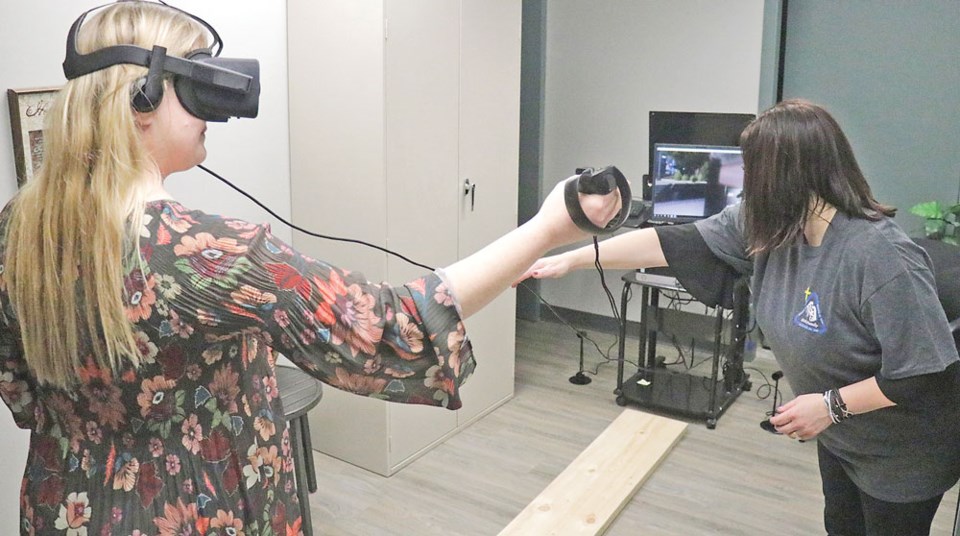Trustees for the Holy Family Roman Catholic Separate School Division got to “walk the plank” before settling into their monthly board meeting Dec. 12.
Thankfully, the trustees only had to walk a virtual plank, as each one tried out a virtual reality outfit, which led into a discussion of the Deep Learning program that Holy Family is growing and expanding, with a setting out of the goals and partnerships related to Deep Learning.
Director of education Gwen Keith and Lynn Colquhoun, co-ordinator of religion, curriculum and education technology, presented information about what Deep Learning is and where they are going with it in the 2018-19 school year. The virtual reality equipment was noted as “a tool to promote 21st century learning competencies.”
Holy Family has developed partnerships with school boards across Canada that are also integrating Deep Learning into their programs, along with IBM and Apple as business partners, the Ministry of Education and the Saskatchewan School Boards Association, with the southeast area represented by Keith, and Lynn Little, the director of education for the South East Cornerstone Public School Division.
There are six foundational pathways or progressions for Deep Learning, and they include creativity, communication, critical thinking, character, citizenship and collaboration. In regard to creativity, the goal is for students to have an “entrepreneurial eye” for economic and social opportunities, asking the right questions to generate novel ideas, and leadership to pursue those ideas and turn them into action.
Keith noted there are numerous examples of changes occurring in society and in technology that makes it absolutely necessary for school divisions to be considering how to incorporate technology into everyday education in schools. She noted just that day there were selfies being sent back to Earth from the Mars space vehicle, as one example.
On other fronts, allergies have arisen over the last 20 years to unprecedented levels, and autism has exploded, said Keith. “There seems to be a real merging between artificial and natural intelligence, and that’s a little frightening. In many ways, we are what we make.”
The result from all of the partnerships, she added, is “you see little Holy Family tied to seven other countries and 2,000 other school divisions who are getting into this,” she said.
Local examples of ways Holy Family is getting into 21st century learning are the use of 3D printers, and robotics, along with tools like virtual reality.
A short video was shown to the trustees, where there’s not just virtual reality but augmented reality also, and a training centre has started up in Regina where these technologies are being used for higher learning such as for medical students training to be doctors, or people learning to be pilots.
The difference between virtual and augmented reality was explained thus: virtual reality is when the world you’re standing in is replaced by an alternate reality. Augmented reality uses what is really there, but adds to it, such as with a data field, on one’s smartphone or with an optical device.
“Virtual reality is not only an interesting tool for us to play with, but it’s here,” said Colquhoun, who showed the trustees there is also an example of it on the Saskatchewan Catholic School Boards Association website, where a person can take a virtual tour of the Vatican and the Basilica in Rome.
“Whether we like it or not, it’s the new reality,” said trustee Jerome Sidloski. “I think anybody who’s not participating in this is not looking at all the changes in education.”
“Some of this looks like it’s far out,” added board chair Bruno Tuchscherer, noting smartphones today not only are for phone calls and texting, but have GPS, take photos and video, and access the Internet.
Sidloski agreed, holding up his cell and noting there’s more technology in that device than there was in getting the first man to the moon.
“Our kids are going to grow up with it. They’re into this stuff, it’s a common reality for them,” said Tuchscherer.
Colquhoun said this was true, and noted that a Grade 8 student from St. Michael School had set the virtual reality demo up for the trustees to try out.



